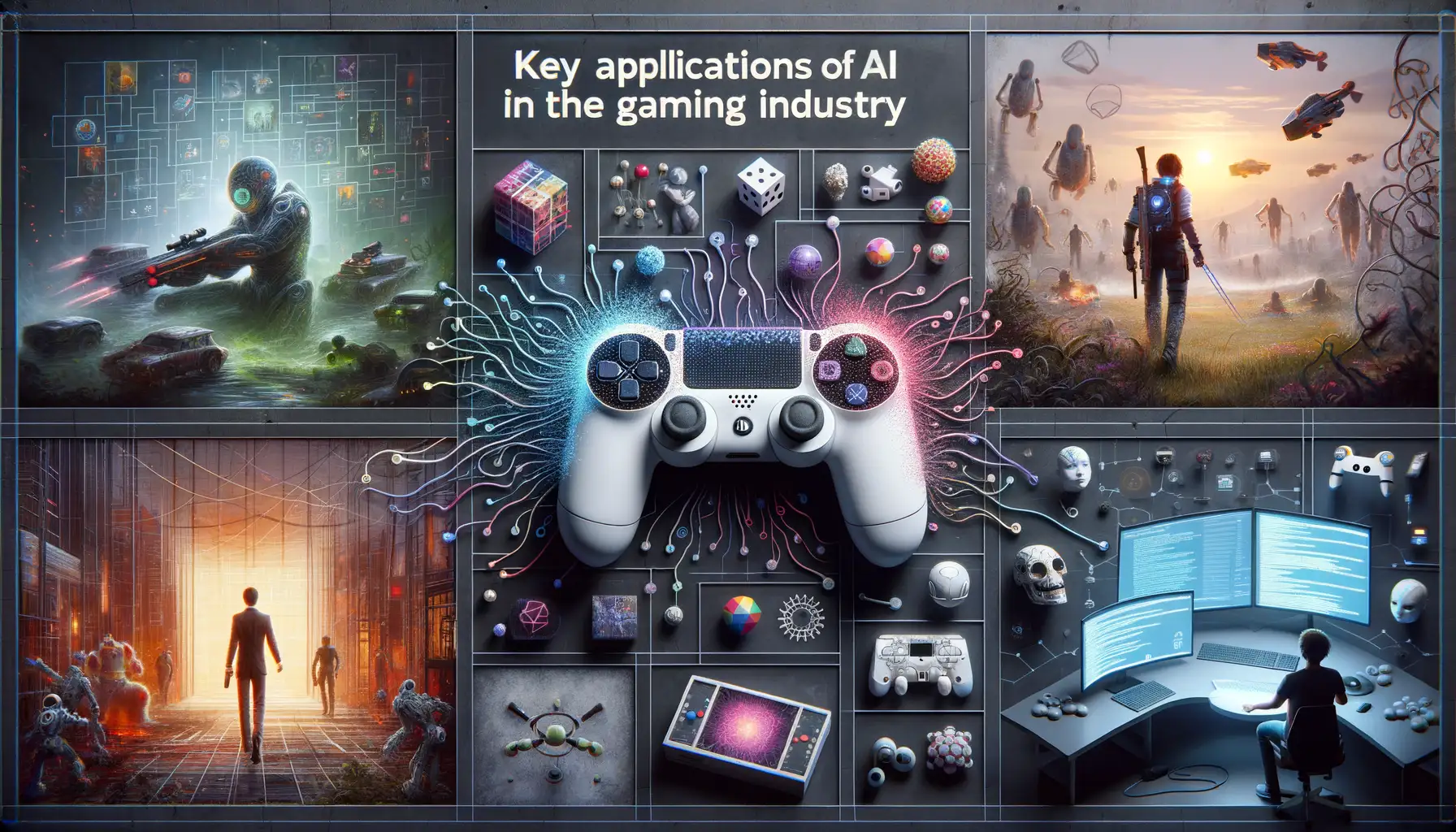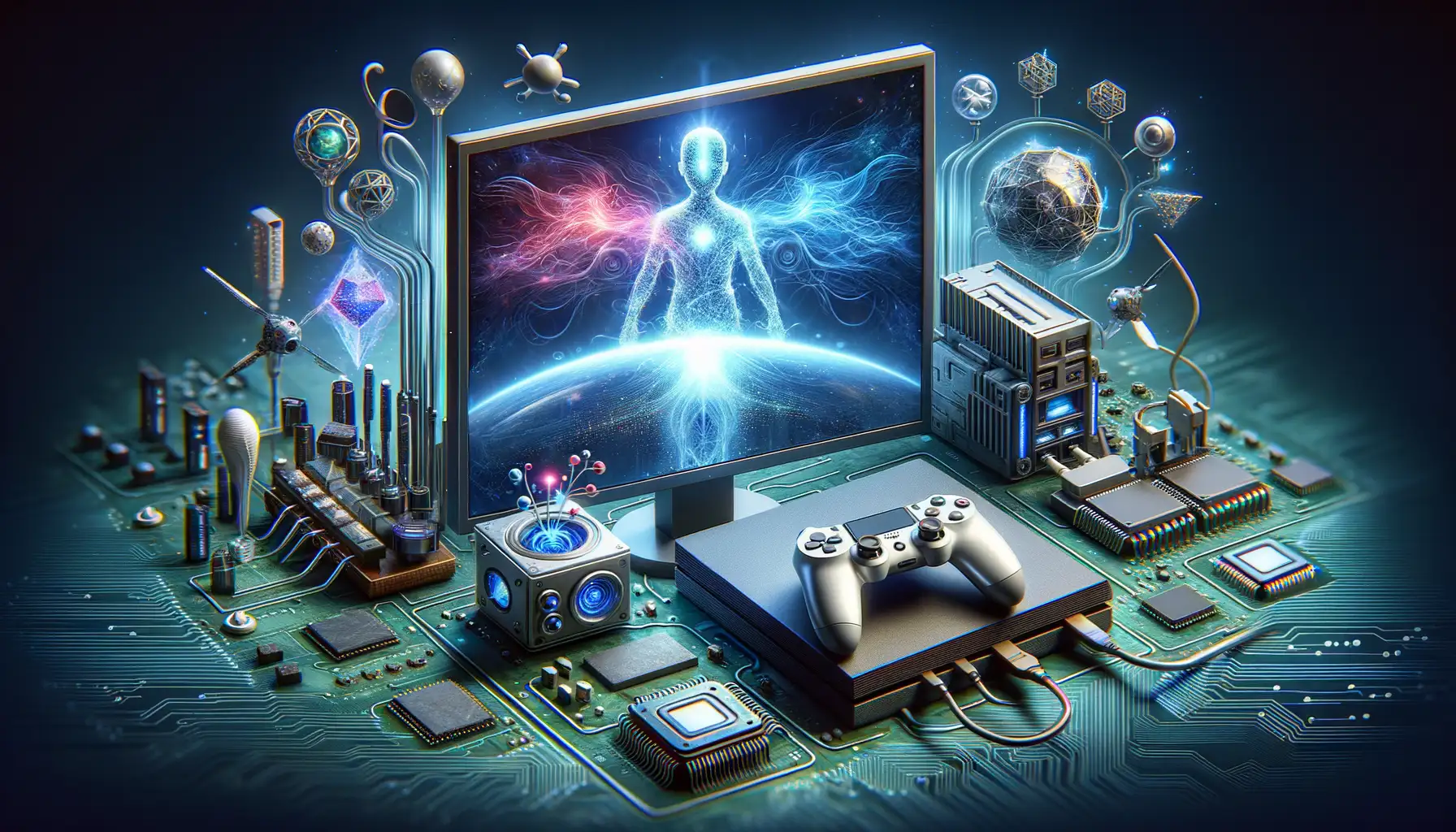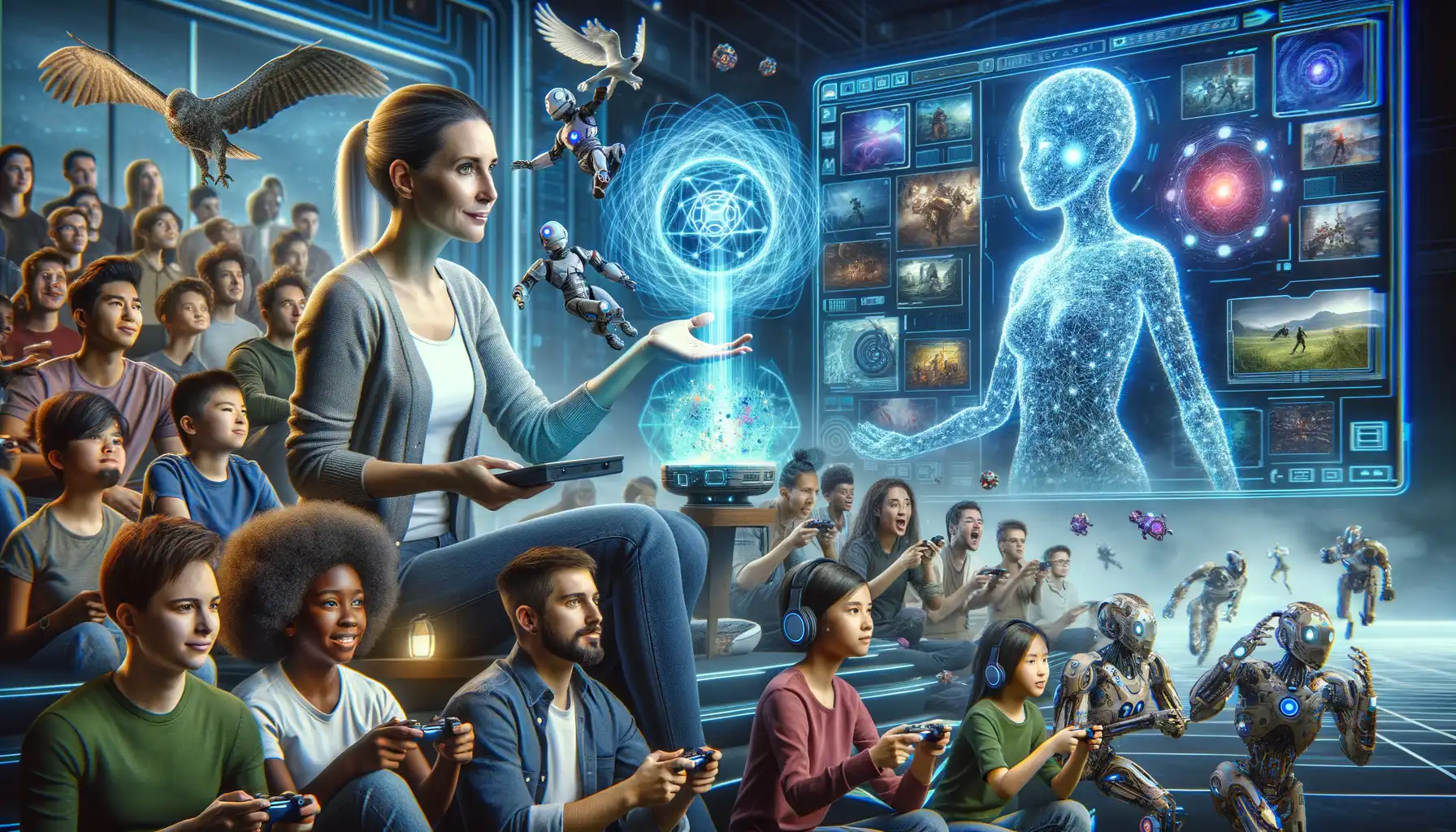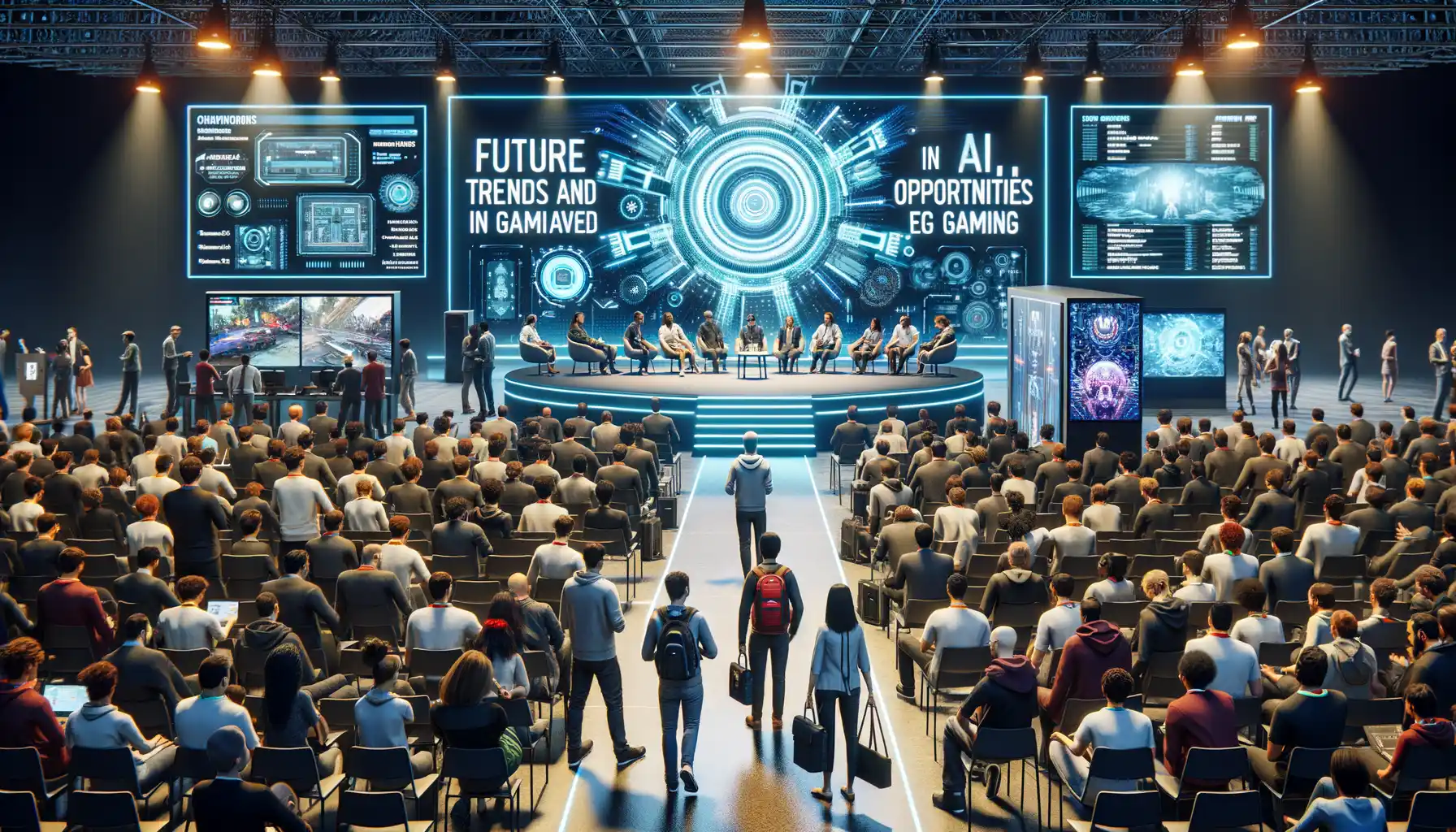Introduction to AI in Gaming
The Spark of Intelligence in Your Games
Imagine a game that doesn’t just react to your actions but seems to anticipate your next move, learning your style and adapting in real-time. That’s the magic of AI in gaming. It’s not just code—it’s almost like having a thinking, evolving presence woven into the fabric of every level, character, and challenge.
AI has come a long way from predictable NPCs (non-playable characters) that simply followed fixed patterns. Today, it gives life to worlds that feel vibrant, characters that have personalities, and narratives that shift based on your decisions. For instance, remember those enemy guards that seemed to always find your hiding spot in stealth games? They now “learn” your strategies over time, forcing you to rethink and adjust.
- Procedural generation: Entire maps, missions, or even galaxies are created dynamically—no two adventures are ever alike.
- Behavior modeling: Characters react emotionally when you save or betray them, creating a ripple effect through the storyline.
This isn’t just gaming anymore; it’s an unpredictable dance where you and the system are partners in crafting unforgettable adventures.
Key Applications of AI in the Gaming Industry

The Magic of AI Behind the Scenes
Imagine stepping into a game world where non-player characters (NPCs) feel like living, breathing individuals. It’s not a coincidence—it’s the wizardry of AI-driven behavior models. These algorithms breathe life into NPCs, making them react dynamically to your actions. Remember that guard who spotted you sneaking by and shouted for reinforcements? Or the trader who adjusted their prices based on your reputation in-game? That’s AI weaving its magic.
And then there’s procedural content generation, which is like letting an artist loose with infinite paint. AI creates sprawling landscapes, detailed dungeons, or even entire galaxies on the fly. The result? No path feels repetitive, every adventure is unique, and monotony becomes a distant memory.
- Dynamic storytelling: AI crafts narratives that adapt to how you play, turning each decision into a plot twist.
- Real-time strategy: Opponents don’t just play—they think, learn, and *counter* you like a seasoned tactician.
The Power of Personalization
Have you ever felt like a game knew *exactly* what you needed? That’s no accident. With the help of player data analysis, AI deciphers your preferences—be it difficulty tweaks, visual styles, or even subtle sound effects you didn’t know you loved. Games like Red Dead Redemption 2 and The Last of Us use this tech to immerse players deeper than ever before. AI isn’t just shaping games; it’s tailoring them to fit snugly around *you*.
Technological Advancements Driving AI in Gaming

Game Engines Supercharged by AI
Imagine your favorite open-world game—a sprawling universe brimming with detail, where every character has a story and every decision feels personal. Now, think about what makes that possible. Enter the realm of cutting-edge game engines like Unreal Engine or Unity, now evolving at breakneck speed thanks to AI. These powerhouses aren’t just rendering pretty visuals anymore; they’re becoming storytellers, crafting immersive adventures with razor-sharp precision.
With procedural content generation, AI in these engines is conjuring entire worlds in real-time without developers painstakingly designing every blade of grass. Consider “No Man’s Sky,” where AI birthed over 18 quintillion unique planets! It’s like having an infinite cosmos squeezed into your gaming console. And don’t get me started on lifelike NPC behavior—AI algorithms are making in-game characters eerily authentic, reacting to players not like coded puppets but like living, breathing beings.
Hardware & Cloud: The Backbone of AI Evolution
Behind those jaw-dropping advancements lies a duo of heroes—advanced hardware and cloud computing.
- GPUs and TPUs: High-performance chips from companies like AMD and NVIDIA are the muscle behind AI’s magic. They enable real-time learning and decision-making, meaning your games adapt as you play.
- Cloud platforms: Think of Google Cloud or Microsoft Azure as nerve centers, wielding their immense computing power to process complex AI functions. Multiplayer games now leverage this tech to sync massive virtual worlds seamlessly across millions of players.
This synergy between software and hardware is akin to giving artists Michelangelo’s chisel but on steroids, unlocking creativity and complexity that’s nothing short of astonishing.
Impact of AI on Player Experience and Game Design

AI Breathing Life into Virtual Worlds
Imagine stepping into a game where every character you meet seems to have a soul, where their reactions feel as unpredictable and nuanced as those of a real human. That’s the magic of AI-driven NPCs (Non-Playable Characters). Developers are using AI algorithms to craft characters with unique personalities, evolving emotions, and lifelike dialogue. This transforms gaming from a mere pastime into an unforgettable emotional journey.
Let’s talk about responsiveness. Think about an open-world RPG where every choice you make ripples outward. Thanks to machine learning, games adapt dynamically. Villages rebuild after battles, side characters remember your actions, and enemies evolve their strategies based on your combat style. No two players ever share the exact same story.
- Procedural content generation: Infinite landscapes, randomized missions, and personalized loot drops crafted in real-time.
- Emotion-based encounters: Enemies sensing fear or NPCs empathizing with your struggles.
Transforming Players into Co-Creators
Here’s something mind-blowing: AI is flipping the traditional gaming script. Now, YOU — the player — can influence game design. Ever used a tool like Mario Maker or Unreal’s AI assistants? AI evaluates your building style, helping refine designs or generating new content you didn’t even know you’d love. It’s not just gaming anymore; it’s collaboration.
Future Trends and Opportunities in AI-Driven Gaming

The Rise of Personalized Gaming Worlds
Imagine a game that feels like it truly knows you—your choices, your quirks, even the way you play when you’re tired versus energized. With AI-generated personalized worlds, this is becoming a breathtaking reality. Games are adapting in real-time, creating dynamic storylines that evolve based on your behavior.
Picture an RPG: instead of scripted NPCs repeating canned phrases, they respond uniquely to your decisions. Befriend them or betray them, and they’ll remember. This isn’t fantasy; it’s what machine learning and natural language processing are already enabling.
The tech behind this? Think procedural generation on steroids, where games craft tailor-made challenges suited to your skills. Whether you thrive under pressure or prefer slow exploration, AI adjusts. It’s not just gameplay—it’s a living, breathing relationship between player and world.
New Business Models and Social Opportunities
AI isn’t stopping at storytelling. It’s reshaping how we socialize and participate in gaming economies. Consider these trends:
- Virtual influencers: AI-powered avatars are hosting events, creating content, and forming communities in online games.
- Play-to-earn dynamics: AI systems balance in-game economies, opening doors for players to earn real-world income through their gaming efforts.
Suddenly, gaming isn’t just entertainment—it’s a career, a social hub, and a space for creativity. What could be more thrilling than a future where players co-create their own destiny?
